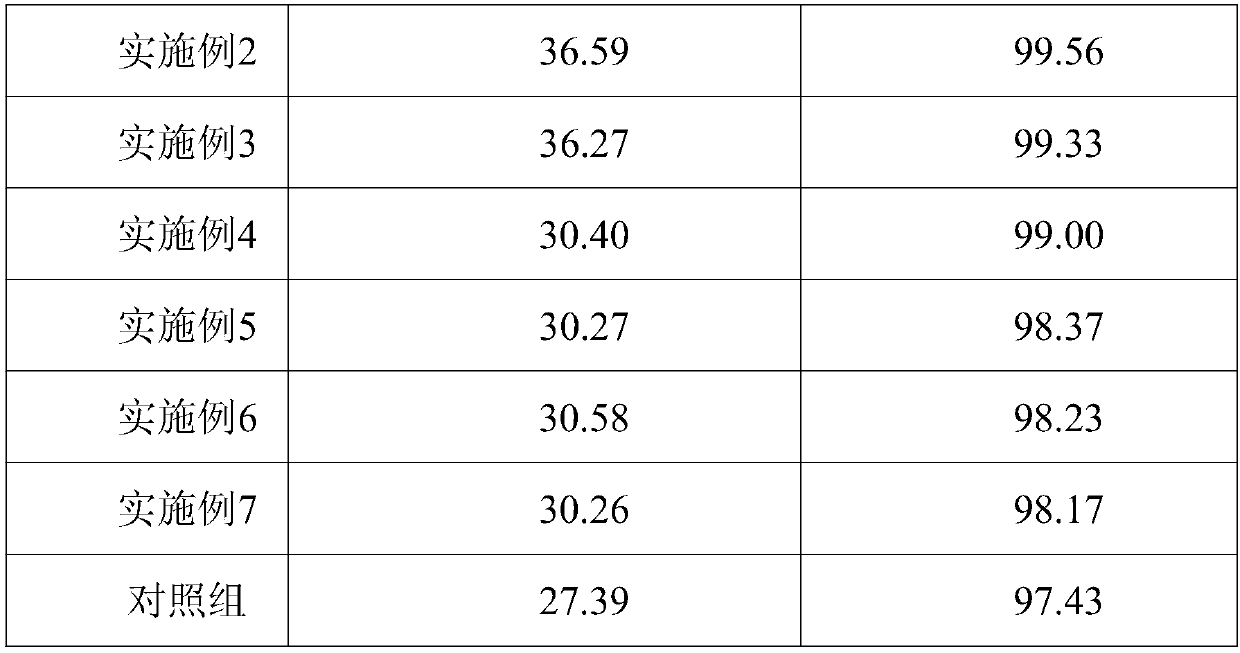Preparation method of modified pollution-resistant hybridized reverse osmosis membrane
A reverse osmosis membrane and anti-pollution technology, applied in chemical instruments and methods, semi-permeable membrane separation, membranes, etc., can solve the problems that membrane materials are difficult to meet the needs of practical applications, and achieve improved industrial practical range, excellent performance, and improved The Effect of Pollution Resistance
- Summary
- Abstract
- Description
- Claims
- Application Information
AI Technical Summary
Problems solved by technology
Method used
Image
Examples
Embodiment 1
[0028] (1) Preparation of polymer solution: disperse 38g of polysulfone and 6g of methylcellulose in 156g of N,N-dimethylformamide (DMF) solvent, stir at 150°C for 6h to dissolve, and then carry out vacuum static Set it for defoaming for 2h to obtain a polymer solution.
[0029] (2) Preparation of base film: the polymer solution in step (1) is prepared on a non-woven fabric through a liquid-solid phase conversion method to prepare a porous polymer support layer. The phase inversion time was controlled to be 0.5 min, the temperature of the water bath was 18°C, the temperature of the thermal curing water bath was 80°C, and the film thickness was 5.5mil.
[0030] (3) soaking the polymer base film in step (2) in deionized water for preservation, and completing the preparation of the porous support layer base film;
[0031] (4) Dissolve 30g of m-phenylenediamine and 3g of sodium hydroxide in 967g of deionized water, stir and dissolve completely to obtain a water phase solution; so...
Embodiment 2
[0036] (1) Preparation of polymer solution: Disperse 38g of polyethersulfone and 6g of methylcellulose in 156g of N,N-dimethylformamide (DMF) solvent, stir at 150°C for 6h to dissolve, and vacuum the resulting solution Stand for defoaming for 4 hours to obtain a polymer solution.
[0037] (2) Preparation of base film: the polymer solution in step (1) is prepared on a non-woven fabric through a liquid-solid phase conversion method to prepare a porous polymer support layer. The phase inversion time was controlled to be 1 min, the temperature of the water bath was 15°C, the temperature of the thermal curing water bath was 70°C, and the film thickness was 5.5mil.
[0038] (3)-(4) are the same as embodiment 1.
[0039] (5) 2.0g trimesoyl chloride is dissolved in 998g organic solvent, and described organic solvent is that normal hexane, sherwood oil, heptane, Isopar-L are mixed according to volume ratio 0.7:4:1.2:3.8, stir Dissolve to obtain an oil phase solution; add 4g inorganic...
Embodiment 3
[0043] Steps (1)-(4) are the same as in Example 1. The inorganic nanoparticles are graphene oxide nanoparticles, nano Ag, nano SiO 2 , Mixed according to the mass ratio of 2-4:0.6-1.0:0.1-0.2.
[0044] (5) 2.0g trimesoyl chloride is dissolved in 998g organic solvent, and described organic solvent is that normal hexane, sherwood oil, heptane, Isopar-L are mixed according to volume ratio 1.2:5:2:4, stir Dissolving to obtain an oil phase solution; adding 5g inorganic nanoparticles to the oil phase solution, the inorganic nanoparticles are graphene oxide nanoparticles, nano-Ag, nano-SiO 2 , mixed according to the mass ratio of 4:1.0:0.2, ultrasonically vibrated for 3 hours, so that the inorganic nanoparticles are evenly dispersed in the oil phase solution; the basement film soaked in the water phase solution in step (4) is soaked in the oil phase solution 1min.
[0045] (6) 60g NH 2 -PEG-OH was dissolved in 940g deionized water; the composite film after the interfacial reactio...
PUM
| Property | Measurement | Unit |
|---|---|---|
| Molecular weight | aaaaa | aaaaa |
Abstract
Description
Claims
Application Information
 Login to View More
Login to View More - R&D
- Intellectual Property
- Life Sciences
- Materials
- Tech Scout
- Unparalleled Data Quality
- Higher Quality Content
- 60% Fewer Hallucinations
Browse by: Latest US Patents, China's latest patents, Technical Efficacy Thesaurus, Application Domain, Technology Topic, Popular Technical Reports.
© 2025 PatSnap. All rights reserved.Legal|Privacy policy|Modern Slavery Act Transparency Statement|Sitemap|About US| Contact US: help@patsnap.com



